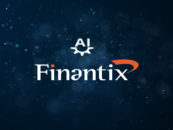
Regulatory Clarity and Digital Innovation Enable Digital Bond Growth in Switzerland
by Fintechnews Switzerland October 13, 2023The Distributed Ledger Technology (DLT) Act of Switzerland has placed the country among the global leaders in digital asset regulations and enabled the development of a rich and diverse ecosystem centered around DLT-based applications and systems.
The regulatory clarity provided by the legislation, coupled with the growth of the digital asset ecosystem, has supported the development of digital bonds, a new report by credit rating firm Moody’s says.
The document takes a look at Switzerland’s legal framework for digital assets, highlighting how the pioneering DLT Act is today one of the world’s most comprehensive laws on DLT and how the legislation has fostered the rise of the digital asset ecosystem and facilitated the issuance of digital bonds.
The DLT Act, which came into force in 2021, has formed an advanced legal framework that provides market participants with guidelines on token categories and stablecoins, securities definitions, and licensing procedures, the report says. The law has three main effects:
- It introduces a new, ledger-based type of security that’s maintained on a blockchain-enabled registry;
- It offers insolvency protection by clarifying the segregation of crypto-based assets and access to data and personal information in the event of bankruptcy; and
- It establishes a license category for DLT trading systems, expanding the potential participant base in digital asset trading platforms to non-financial institutions and retail customers and allowing them to trade, custody, clear and settle digital assets on licensed platforms.
SIX Digital Exchange (SDX), an affiliate of Swiss stock exchange operator SIX Group, was the first entity to receive regulatory approval to offer issuance, listing, trading, settlement, servicing, and custody of digital securities in Switzerland.
Since receiving its licenses in September 2021, SDX has grown into one of the country’s leading platforms for regulated digital bonds, having facilitated the issuance of natively digital bonds for SIX Group, UBS and the City of Lugano.
These bonds used the SDX infrastructure, as well as the SIX Swiss Exchange’s traditional infrastructure, a dual listing that has allowed for maximum market outreach by enabling investors to invest and trade bonds through both SDX’s or SIX’s member banks, the Moody’s report says.

Digital bonds issued through SIX Digital Exchange, Source: Swiss digital bonds benefit from favorable existing and adapted federal laws, Moody’s, Aug 2023
Besides digital bonds, SDX is also involved in a wholesale CBDC (wCBDC) project with the Swiss National Bank, along with the Bank for International Settlements (BIS) Innovation Hub Swiss Centre, and multiple commercial banks, it notes.
According to Moody’s, wCBDC projects could promote the preservation of central bank money as the priority asset to pay and settle securities on blockchain infrastructures, innovate payment systems, and make interbank transfers more seamless, benefiting the digital bond market.
Blockchain-based digital bonds gain traction
Digital bonds are an emerging application of blockchain technology that have attracted the attention of countries and corporations.
These instruments, which are essentially debt securities, are issued and managed using DLT. By leveraging blockchain’s immutable, transparent, and decentralized nature, digital bonds offer increased efficiency, reduced costs and enhanced security.
Moreover, blockchain allows for fractionalization, making it possible for bonds to be split into smaller denominations. This makes these financial instruments more accessible to retail investors and increases thus accessibility.
In the region, the European Investment Bank (EIB) has been among the pioneering institutions in the field. In 2021, the bank announced that it had launched a digital bond issuance on the Ethereum blockchain, collaborating with major banks including Goldman Sachs, Banco Santander and Societe Generale.
This year, EIB launched several other instruments, introducing its first ever digital bond in pound sterling in January and premiering a digital green bond on so|bond, a blockchain-based digital bond platform launched by SEB and Credit Agricole, in June.
Most recently, ABN AMRO became the first Dutch bank to register a digital green bond on a public blockchain. The initiative saw Vesteda, a Dutch real estate investor, raise EUR 5 million from German financial firm DekaBank to finance green assets.
The landmark Markets in Crypto-Assets Regulation in the European Union (EU) was adopted in May this year. The legislation, which will take effect on December 30, 2024, will regulate the issuance and trading of crypto-assets including utility tokens, asset referenced tokens and so-called stablecoins, as well as the management of the underlying assets.
Industry experts and stakeholders estimate that DLT could unlock transformative cost-saving and operational efficiency benefits of approximately US$20 billion annually in global clearing and settlement costs. The technology could also fuel innovation-led growth, increase market access and enable new liquidity pools when operating at scale, allowing the market of tokenized illiquid assets to expand from just US$300 million today to US$16+ trillion by 2030.
Featured image credit: edited from Freepik





